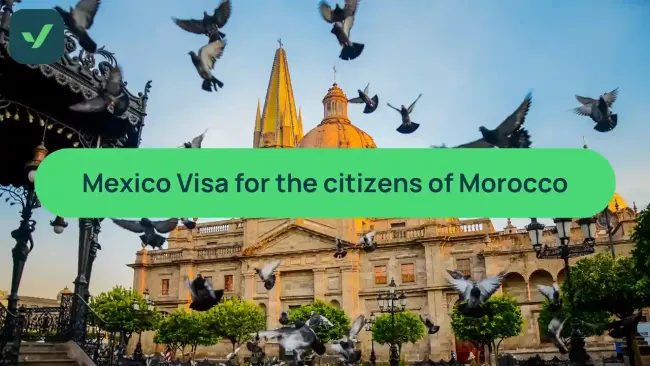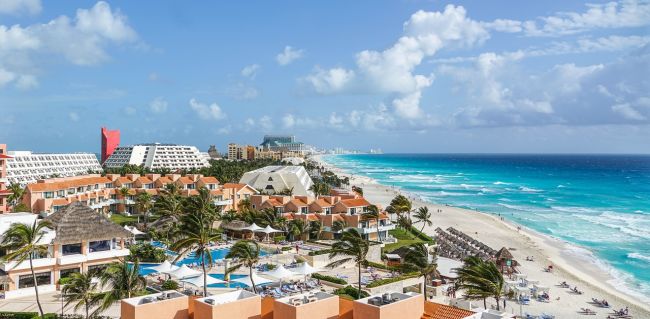
Mexico
Welcome to Mexico
Wondering about visa requirements for Mexico? We'll help you check if you need one, identify the right type, and guide you through the application process. This way, you can quickly move past the paperwork and start focusing on your Mexican journey.
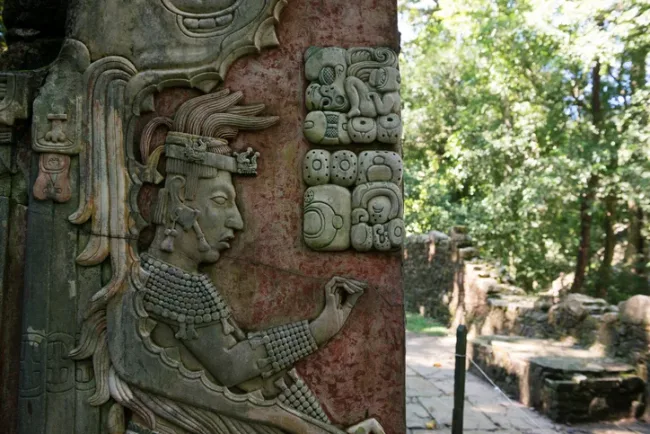
What’s a Mexico Tourist Visa and who’s it for?
The Mexico Tourist Visa is also called a Visitor Visa and allows travelers to enter Mexico for tourism purposes.
Who’s the Mexico Tourist Visa for?
This visa is offered to over 170 nationalities, including travelers from Bangladesh, Bahrain, Brazil, Bhutan, Botswana, Belarus, Congo, Ivory Coast, Cameroon, China, Cuba, Dominican Republic, Ecuador, Egypt and more.
Who’s not eligible for a Mexico Tourist Visa?
-
Citizens from Andorra, Argentina, Australia, Austria, Bahamas, Barbados, Belgium, Belize, Bulgaria, Canada, Chile, Cook Islands and more.
-
If you have a legal permanent resident permit from one of the following countries: Canada, the United States of America, Japan, the United Kingdom of Great Britain and Northern Ireland, any Schengen country, and the countries of the Pacific Alliance (Chile, Colombia, and Peru). The residence card should state explicitly "permanent residence."
-
If you hold a valid visa to Canada, the United States of America, Japan, the United Kingdom of Great Britain and Northern Ireland, or any of the Schengen member states. (The Norwegian resident card does not count as a valid visa.)
-
If you have an APEC Business Travel Card (ABTC) issued by an Asia-Pacific Economic Cooperation (APEC) economy.
Find out if you’re eligible or visa-exempt for a Mexico Tourist Visa.
What’s the purpose of the Mexico Tourist Visa?
-
Tourism activities like sightseeing, holidays, and visiting family.
-
Business activities, including attending conferences, networking events, or client meetings (but not paid work).
-
Do temporary volunteer work or a language course.
How long can you stay with a Mexico Tourist Visa?
This Multiple entry visa is valid for six months and allows you to stay up to 180 days per entry.
Learn more about the Mexico Tourist Visa
What’s a Mexico ETA and who’s it for?
The Mexico ETA (also known as the Sistema de Autorización Electrónica or SAE) is technically not a visa but an electronic authorization for visitors from specific countries.
Who’s the Mexico ETA for?
The ETA can only be used to arrive in Mexico by air and is designed for travelers from Russia, Turkey (only for red passport holders), Ukraine, and Peru (only for Peruvians traveling to Mexico with Aeroméxico for transit purposes).
What’s the purpose of the Mexico ETA?
This authorization can be used for tourism, for business trips, and to visit family and friends.
How long can you stay with a Mexico ETA?
The ETA is for Single entry use and is valid for 30 days after issued. Once you enter Mexico, you can stay for up to 180 days per entry.
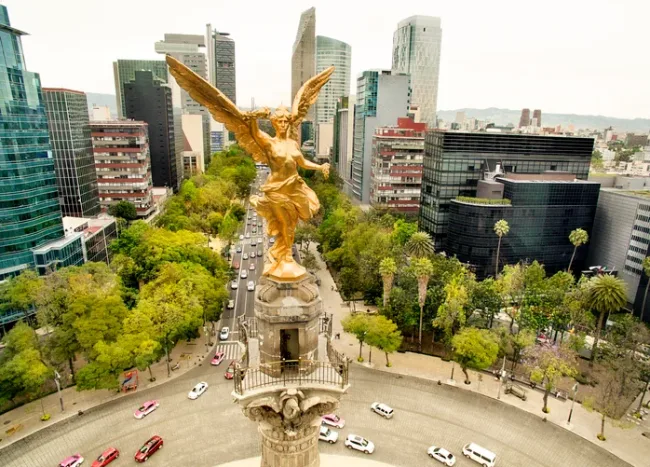
What’s a Mexico Tourist Card and who’s it for?
It’s also known as the Forma Migratoria Múltiple (FMM). While it’s not a visa, the Mexico Tourist Card is a mandatory government form for tourists entering Mexico via land, air, or sea.
Who’s the Mexico Tourist Card for?
All foreign nationals traveling to Mexico, whether they need a Mexican visa or are visa-exempt. Only holders of Mexico temporary and permanent resident visas don’t need one.
What’s the purpose of the Mexico Tourist Card?
The Mexico Tourist Card establishes and proves that a foreigner's entry into Mexico is lawful and details information about their visit to Mexico.
How long can you stay with a Mexico Tourist Card?
The Mexico tourist card is a single-entry card and is granted for a maximum of 180 days in total. It cannot be extended.
Learn more about the Mexico Tourist Card
What’s the Mexico Electronic Pre-Registration System and who’s it for?
This is an electronic system specifically designed for Colombians to pre-register their air travel.
Who’s the Mexico Electronic Pre-Registration System for?
All Colombian passport holders (including those who are temporary or permanent residents in Colombia) traveling to Mexico by air.
What’s the purpose of the Mexico Electronic Pre-Registration System?
It gives Colombian travelers the opportunity to state the purpose of their trip and provide the information on their travel documents in advance. If there’s any reason for the immigration authorities not to admit the traveler, they will be notified in Colombia before they board the plane.
How long can you stay with the Mexico Electronic Pre-Registration System?
If you’re approved for travel, you’ll receive a QR code and a Mexico Tourist Card by email, which is valid for up to 180 days.
What are the Mexico long-term visa options and who are they for?
Mexico offers several long-term visa options for various purposes, such as employment, study, business, and residence. Here are some of the common ones:
Temporary Resident Visa: Commonly known as a digital nomad visa, this visa can be used by visitors looking to work remotely and earn an income (from outside Mexico) while exploring the country as a tourist.
Permanent Resident Visa: Often called the Mexico Retirement Visa, this is commonly used by retirees with a passive income, such as a pension. It's also available to foreigners with strong family ties or those who have been temporary residents in Mexico for at least four years.
Student Visa: It's typically valid for the duration of your academic program. There are two separate visas, one for shorter studies of up to 180 days and a temporary residence visa that allows for studies that will take longer than 180 days.
Work Visa: Designed for those aiming to work and contribute to Mexico's economy it can be issued for various durations depending on your employment contract.
Family Visa: Perfect for reuniting with loved ones in Mexico. It lets you stay for a specified period, often tied to your family member's situation or residency status.
At iVisa, we currently don’t offer these visas, but you can find out more from the Mexico Ministry of Foreign Affairs website
Staying healthy in Mexico: Here’s what you need to know
Healthcare facilities and standards in Mexico can vary significantly depending on the location and the type of facility. Here's what travelers should know.
Make sure to stay updated on routine vaccines
-
Consider vaccines for diseases like hepatitis A, tetanus, and typhoid. Depending on your plans, you might also want to consider additional immunization for mosquito-borne diseases.
-
Keep updated with Mexico’s COVID-19 requirements, such as quarantine, testing, or vaccine certificates, through your airline or the Mexico government website.
Medical facilities
-
In major cities like Tijuana, Guadalajara, Mexico City, and Cancun, you'll find private hospitals and specialized centers that offer high-quality healthcare services and English-speaking staff. These are also the ones mostly used for medical tourism.
-
However, in rural areas, medical services may be less advanced and harder to access.
-
For more reliable healthcare services, travelers typically prefer private clinics and hospitals, which generally offer higher standards of care. These facilities, however, can be costly.
-
Pharmacies are available in cities and towns. Most common medications are available in Mexico Mexico.
Health insurance
We recommend taking out health insurance before you travel.
All the major cities in Mexico will likely have private medical care, but it can get expensive. Ensure your insurance covers substantial medical expenses.
Contact your insurance provider before traveling to make sure you have the right level of coverage.
You should aim for a policy that has:
-
Trip cancellation, delay, and interruption benefits.
-
Medical expenses and medical evacuation benefits.
-
Lost baggage cover.
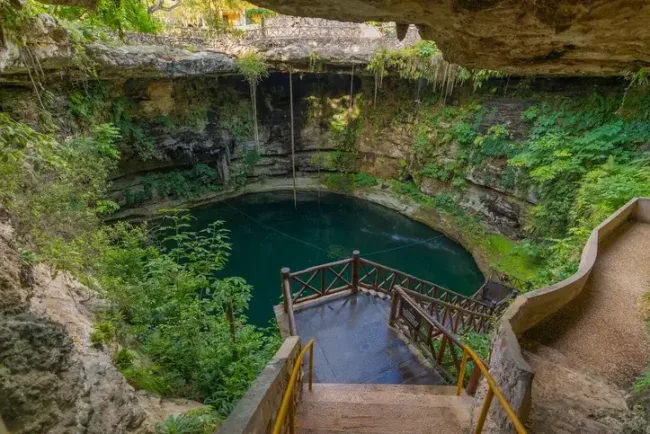
Things to be aware of when visiting Mexico
Keep an extra eye on the following to keep healthy and safe during your trip to Mexico:
-
Food and water safety: To prevent stomach ailments, stick to bottled water, avoid ice in drinks, wash fruit and vegetables well, and be cautious with street food.
-
Insect-borne illnesses: In some areas of Mexico, there is a risk of mosquito-borne diseases such as dengue, chikungunya, and the Zika virus. Use insect repellent and wear long-sleeved clothing, especially in tropical regions.
-
Heat protection: Mexico's sun can be intense. Protect yourself with sunscreen, sunglasses, and a hat, and drink plenty of water to stay hydrated, especially in hot and dry regions.
Medication for personal use
Follow these tips to bring over-the-counter medicines into Mexico:
-
Declare all medications: Declaring any controlled or prescription medications upon arrival is essential.
-
Original packaging: Always keep medicines in their original containers with prescription labels.
-
Prescription or doctor's letter: Carry a valid prescription or a letter from your doctor explaining the need for each medication, preferably in Spanish and English.
-
Check for restrictions: Research beforehand to ensure your medications are allowed, as some substances are restricted or prohibited. Contact your nearest Mexico embassy to verify that all of your prescription(s) are legal to bring with you.
-
Quantity matters: Bring only a reasonable quantity of medication aligned with your stay duration to avoid complications.
The full list of countries that need to apply for a Mexico
Tourist Visa
| Afghanistan | El Salvador | Madagascar | Saudi Arabia |
| Albania | Equatorial Guinea | Malawi | Senegal |
| Algeria | Eritrea | Maldives | Serbia |
| Angola | Ethiopia | Mali | Seychelles |
| Armenia | Fiji | Mauritania | Sierra Leone |
| Azerbaijan | Gabon | Mauritius | Solomon Islands |
| Bahrain | Gambia | Moldova | Somalia |
| Bangladesh | Georgia | Mongolia | South Africa |
| Belarus | Ghana | Montenegro | South Sudan |
| Benin | Grenada | Morocco | Sri Lanka |
| Bhutan | Guatemala | Mozambique | Sudan |
| Bolivia | Guinea | Myanmar | Suriname |
| Bosnia and Herzegovina | Guinea-Bissau | Namibia | Swaziland |
| Botswana | Guyana | Nauru | Syria |
| Brazil | Haiti | Nepal | Tajikistan |
| Brunei | Honduras | Nicaragua | Tanzania |
| Burkina Faso | India | Niger | Thailand |
| Burundi | Indonesia | Nigeria | Togo |
| Cambodia | Iran | North Korea | Tonga |
| Cameroon | Iraq | North Macedonia | Tunisia |
| Central African Republic | Ivory Coast | Oman | Turkey |
| Chad | Jordan | Pakistan | Turkmenistan |
| China | Kazakhstan | Palestine | Tuvalu |
| Colombia | Kenya | Papua New Guinea | Uganda |
| Comoros | Kiribati | Philippines | Ukraine |
| Congo | Kosovo | Qatar | Uzbekistan |
| DR Congo | Kuwait | Russia | Vanuatu |
| Cuba | Kyrgyzstan | Rwanda | Venezuela |
| Djibouti | Laos | Saint Kitts and Nevis | Vietnam |
| Dominican Republic | Lebanon | Saint Lucia | Yemen |
| East Timor | Lesotho | Saint Vincent and the Grenadines | Zambia |
| Ecuador | Liberia | Samoa | Zimbabwe |
| Egypt | Libya | Sao Tome and Principe |
The full list of countries that are visa-exempt for Mexico
| Andorra | Bolivia | Luxembourg | Romania |
| Argentina | Estonia | Macau | San Marino |
| Australia | Finland | Malaysia | Singapore |
| Austria | France | Malta | Slovakia |
| Bahamas | Germany | Marshall Islands | Slovenia |
| Barbados | Greece | Micronesia | South Korea |
| Belgium | Hong Kong | Monaco | Spain |
| Belize | Hungary | Netherlands | Sweden |
| Bulgaria | Iceland | New Zealand | Switzerland |
| Canada | Ireland | Niue | Trinidad and Tobago |
| Chile | Israel | Norway | United Arab Emirates |
| Cook Islands | Italy | Palau | United Kingdom |
| Costa Rica | Jamaica | Panama | United States of America |
| Croatia | Japan | Paraguay | Uruguay |
| Cyprus | Latvia | Peru | Czech Republic |
| Lichtenstein | Poland | Denmark | Lithuania |
| Portugal |

 Australia ETA Online
Australia ETA Online
 United Kingdom ETA
United Kingdom ETA
 India Tourist eVisa
India Tourist eVisa
 Canada ETA Visa
Canada ETA Visa
 Turkey eVisa
Turkey eVisa
 Egypt eVisa
Egypt eVisa
 Singapore SG Arrival Card
Singapore SG Arrival Card
 Indonesia eVoa Visa
Indonesia eVoa Visa
 Aruba ED Card
Aruba ED Card

